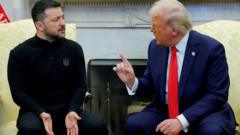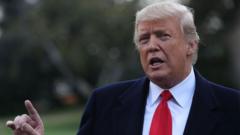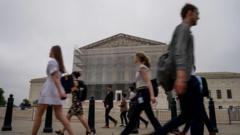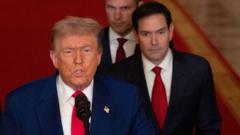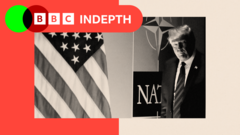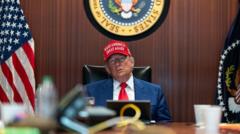This week, President Donald Trump took a decisive step to reform the prescription drug market by issuing an executive order that compels pharmaceutical companies to either voluntarily cut prices or match the lowest rates available in developed countries. The order confronts the long-standing issue of high drug prices for American consumers and sets a 30-day deadline for compliance.
Trump's Executive Order to Revolutionize Prescription Drug Pricing
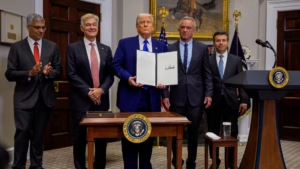
Trump's Executive Order to Revolutionize Prescription Drug Pricing
In a significant move, President Trump signs an executive order mandating pharmaceutical companies to reduce drug prices or align with international market rates.
Article:
President Donald Trump has made headlines this week by signing an executive order that aims to dramatically alter the landscape of the prescription drug market in the United States. The order presents a clear ultimatum to pharmaceutical companies: they are to either reduce drug prices voluntarily or risk being forced to match the lowest prices charged in other developed nations.
This executive directive targets the longstanding price discrepancies that American consumers have faced, setting a tight window of 30 days for drug manufacturers to implement real price reductions. Should they fail to do so, the administration plans to proceed with a strategy that ties the cost of certain medications in the U.S. to the lowest available international prices.
Framed by the Trump administration as a necessary response to exploitative pricing practices, the initiative looks to address years of grievances among Americans who have routinely paid significantly more for the same medications available at far lower costs abroad, particularly in countries such as Canada and those in Europe. Throughout his presidency, Trump has consistently criticized the pharmaceutical sector, labeling it one of the most potent yet least accountable industries within the economy.
Supporters of the executive order hail it as both an economically sound and ethically crucial measure. With prescription drug costs consistently outstripping wage growth—adversely affecting seniors and low-income families—the push against Big Pharma has been intensifying for decades. By sidestepping the legislative gridlock typical in Congress, Trump’s administration is positioning itself as a chief adversary to what many consider a malfunctioning healthcare system.
Conversely, skepticism remains widespread among critics who question whether this order will withstand legal challenges or risk stifling innovation within the pharmaceutical sector. Nonetheless, White House officials assert that this executive order serves as an initial step in an ongoing reform process, one that may include further regulatory measures such as restructuring supply chains and enhancing price transparency.
For millions of Americans facing the burden of exorbitant medication costs, this executive order could signify a pivotal shift in U.S. healthcare policy, potentially representing a defining success for the Trump administration in its efforts to combat corporate influence in the healthcare industry.
President Donald Trump has made headlines this week by signing an executive order that aims to dramatically alter the landscape of the prescription drug market in the United States. The order presents a clear ultimatum to pharmaceutical companies: they are to either reduce drug prices voluntarily or risk being forced to match the lowest prices charged in other developed nations.
This executive directive targets the longstanding price discrepancies that American consumers have faced, setting a tight window of 30 days for drug manufacturers to implement real price reductions. Should they fail to do so, the administration plans to proceed with a strategy that ties the cost of certain medications in the U.S. to the lowest available international prices.
Framed by the Trump administration as a necessary response to exploitative pricing practices, the initiative looks to address years of grievances among Americans who have routinely paid significantly more for the same medications available at far lower costs abroad, particularly in countries such as Canada and those in Europe. Throughout his presidency, Trump has consistently criticized the pharmaceutical sector, labeling it one of the most potent yet least accountable industries within the economy.
Supporters of the executive order hail it as both an economically sound and ethically crucial measure. With prescription drug costs consistently outstripping wage growth—adversely affecting seniors and low-income families—the push against Big Pharma has been intensifying for decades. By sidestepping the legislative gridlock typical in Congress, Trump’s administration is positioning itself as a chief adversary to what many consider a malfunctioning healthcare system.
Conversely, skepticism remains widespread among critics who question whether this order will withstand legal challenges or risk stifling innovation within the pharmaceutical sector. Nonetheless, White House officials assert that this executive order serves as an initial step in an ongoing reform process, one that may include further regulatory measures such as restructuring supply chains and enhancing price transparency.
For millions of Americans facing the burden of exorbitant medication costs, this executive order could signify a pivotal shift in U.S. healthcare policy, potentially representing a defining success for the Trump administration in its efforts to combat corporate influence in the healthcare industry.



